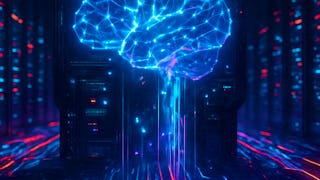This course introduces the fundamentals of Natural Language Processing (NLP), combining core linguistic concepts with hands-on programming techniques to help you understand how machines process human language. Whether you're new to NLP or looking to build foundational skills, this course provides a clear and practical path into one of the most exciting areas of AI and data science.



Natural Language Processing Essentials
This course is part of Mastering NLP: Tokenization, Sentiment Analysis & Neural MT Specialization

Instructor: Edureka
Access provided by EDGE Group
Recommended experience
What you'll learn
Remember key NLP concepts and terminology used in processing human language and modern AI applications.
Understand core linguistic principles like morphology, syntax, semantics, and pragmatics in NLP.
Apply Python tools and techniques to clean, preprocess, and extract features from text data effectively.
Develop and evaluate basic NLP models for tasks like text classification and named entity recognition.
Skills you'll gain
Details to know

Add to your LinkedIn profile
15 assignments
June 2025
See how employees at top companies are mastering in-demand skills

Build your subject-matter expertise
- Learn new concepts from industry experts
- Gain a foundational understanding of a subject or tool
- Develop job-relevant skills with hands-on projects
- Earn a shareable career certificate

There are 4 modules in this course
In this module, learners will develop a foundational understanding of Natural Language Processing (NLP) and its role in interpreting and processing human language. They will explore the history of NLP, its key challenges, and real-world applications. The module also introduces essential linguistic concepts—morphology, syntax, semantics, pragmatics, and discourse—that form the basis of how machines understand and work with human language.
What's included
22 videos3 readings4 assignments1 discussion prompt
This module focuses on preparing textual data for analysis by exploring techniques like tokenization, normalization, stemming, and lemmatization. Learners will also examine various feature extraction methods, including Bag-of-Words, TF-IDF, and word embeddings like Word2Vec and GloVe to represent language in machine-readable formats.
What's included
44 videos4 readings6 assignments
In this module, learners will study techniques for identifying entities and extracting structured information from text. It covers rule-based and deep learning-based NER models, dependency and constituency parsing methods, and syntactic tree construction to enable deeper text understanding.
What's included
13 videos3 readings4 assignments
This module is designed to assess learners on the key concepts and techniques covered throughout the course. It includes a graded quiz that tests knowledge of NLP foundations, linguistic principles, text preprocessing, feature engineering, entity recognition, and parsing methods using both classical and deep learning approaches.
What's included
1 video1 reading1 assignment1 discussion prompt
Earn a career certificate
Add this credential to your LinkedIn profile, resume, or CV. Share it on social media and in your performance review.
Why people choose Coursera for their career







